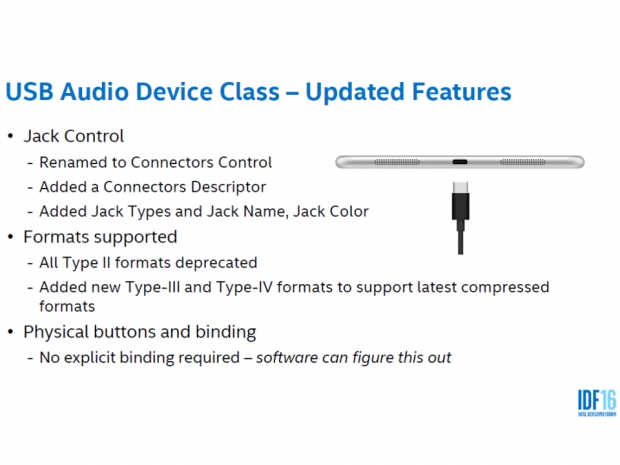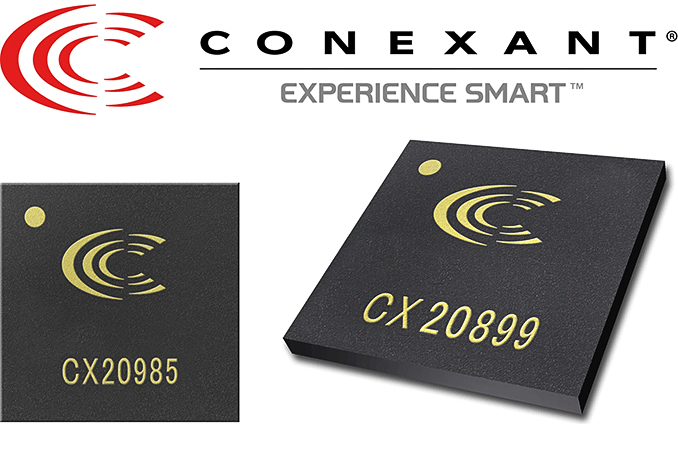
Conexant is the first company to announce chips designed after Intel’s USB-C Digital Audio standard, according to a recent post by AnandTech. Although the USB Type-C standard traditionally supports up to 10Gbps bidirectional bandwidth, Conexant’s CX20985 and CX20899 chips will start by supporting USB 2.0 bandwidth up to 480Mbps. This bandwidth rate should technically still give plenty of headroom for high-fidelity audio transmissions along the 24-bit range with any additional functionality such as equalizer customization and room correction adjustments.
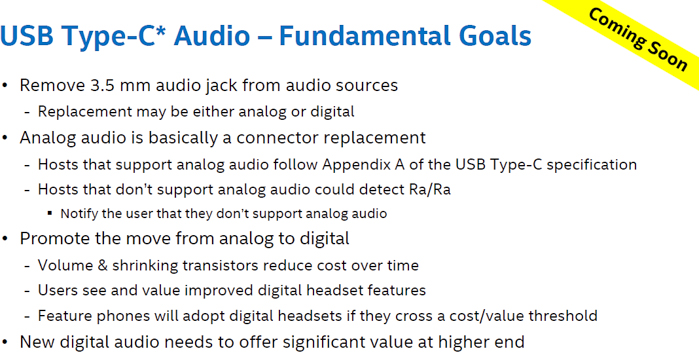
Source: Intel Developer Forum 2016 in Shenzhen, China (April 2016)
Intel’s standard was made public in late April and is a result of the company’s ambitions to lead the industry toward a unified digital interconnect for at least three purposes – data transfer, charging (up to 100 watts), and now audio. Of course, USB Type-C is a universal all-in-one format that also supports video signals over DisplayPort Alternate Mode (up to 8.1Gbps per lane) but any video transfer capability over USB-C versus alternative formats such as MHL is ultimately left to the discretion of mobile device manufacturers.
The main premise behind USB-C Digital Audio is that Intel wants to use USB-C as the universal port that it was designed to become. This includes audio transmissions to headphones, docking stations, health-monitoring headsets, car stereos, soundboards, wearables, and many other digital playback devices in the long run of the format. The traditional 3.5mm headphone jack has been around since the 1960s, and while it’s a very reliable and trusted connector, it only serves the purpose of providing 2-channel analog stereo audio signals. There is also no possible conversion into 5.1 or 7.1 formats, with the most advanced option being “matrixed” Dolby Surround with decoding performed on the device side.
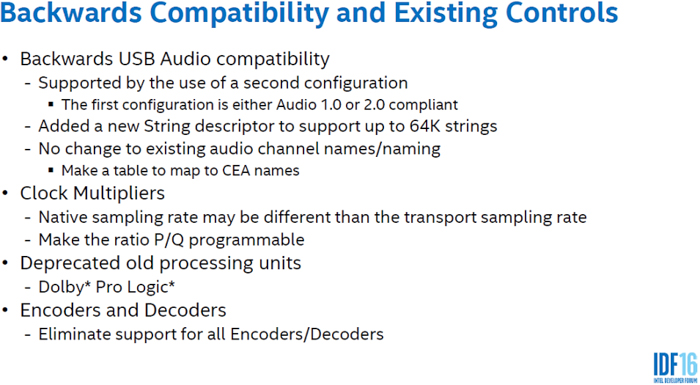
Although no one has currently succeeded in replacing the ubiquitous 3.5mm audio standard, Intel hopes that some of the “smart standard” features proposed in its USB-C Digital Audio specification will be enough to convince even the most diehard analog audio purists that there might be a digital alternative finally worth adopting. Of course, the concept is not new. In the early 2000s, Motorola and others used mini USB connectors for data transfers, charging and headset connectivity. In 2016, Intel wants to do the same thing with USB-C, only this time there will be enough bandwidth to drive premium lossless audio content along while allowing headsets to perform digital-to-analog conversions and offload all the amperage to make it possible.
Conexant CX20985 – specifically designed for headsets
The CX20985 features a 24-bit DAC with sampling rates up to 48kHz and a stereo ADC for music and voice applications, including Skype for Business and Google’s basic Android Wired Audio Headset 1.1 specification. The chip features a five-band parametric equalizer for playback, two-band equalizer for recording, and an integrated capless headphone driver that eliminates the need for AC coupling capacitors. The CX20985 also features very low idle power consumption of just 22.6mA with voltage between 4.35 and 5.25V. Conexant expects its headphone-optimized USB-C digital audio chip to hit mass production in July using a 6 x 6mm 50-pin QFN package.
Conexant CX20899 – designed for high-end headsets and docking stations
The CX20899 features a full-fledged DSP with sampling rates up to 96kHz and a stereo ADC with the same 96KHz sampling rate for playback over differential “line-out” or a capless headphone driver. The DSP supports a variety of more advanced functions including digital room correction, microphone automatic gain control (AGC), acoustic echo cancelling and a programmable equalizer, among others. The CX20899 also supports PCM/I2S and S/PDIF outputs for docking stations and higher-end mobile equipment over USB-C connections. While more power-hungry, this chip also features reasonable idle power consumption of just 1.8mA with voltage between 4.35 and 5.25V. Conexant says this chip is already in mass production and uses a 76-pin QFN package.
Pricing and availability
Conexant has traditionally been an early adopter of USB audio formats and has released at least eight current USB-based solutions over the past two years, typically costing around $1 per unit. In June 2014 the company announced the CX20562, a USB DSP codec with Class-D amplifier (48-pin QFN package), capable of driving 1.2 watts on a 4-ohm signal through USB host power. In August 2014, it announced the CX2077x, a 24-bit USB DSP codec system-on-chip with integrated PWM LED drivers. Two other interesting products released the same year were the CX2087x and CX20833, featuring USB-based Dolby and DTS headphone decoders with Class-D amplifiers. We expect the company's new CX20985 and CX20899 USB-C chips to become available for device manufacturers to use sometime towards the end of the year, with initial products being unveiled next January at CES.
Adoption concerns surrounding Intel USB-C Digital Audio
Intel’s USB-C Digital Audio specification contains two side-band pins, SBU1 and SBU2, that can transfer analog audio signals when a host device is put into “audio adapter accessory” mode. One journalist from AndroidAuthority.com notes that this solution may not be favored by audio purists as it puts potentially-cleaner analog audio signals next to noisier digital audio pathways. While this can be a concern for some on paper, the results in real-world testing could be drastically different with the migration of multi-function processing units (MPUs) from mobile devices onto headphones and headsets themselves.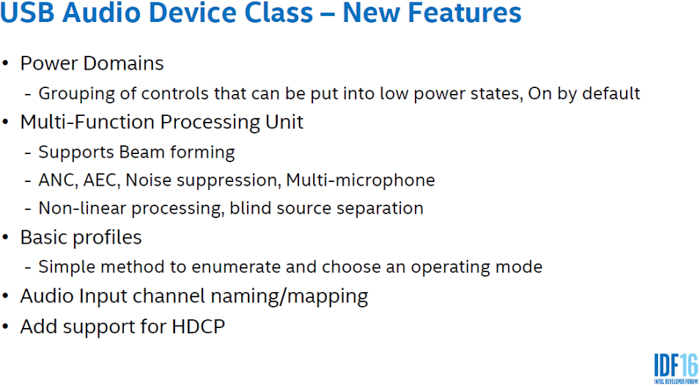
Currently, many smartphones and other mobile devices contain MPUs that support features like non-linear processing, acoustic echo cancellation, noise suppression and beamforming, among other things. If Intel is offloading these features onto headphone and headsets, we can definitely expect digital audio accessory prices to rise significantly, with the presumption that they will integrate “smart features” that were previously reserved for on-board smartphone and tablet codecs and DACs.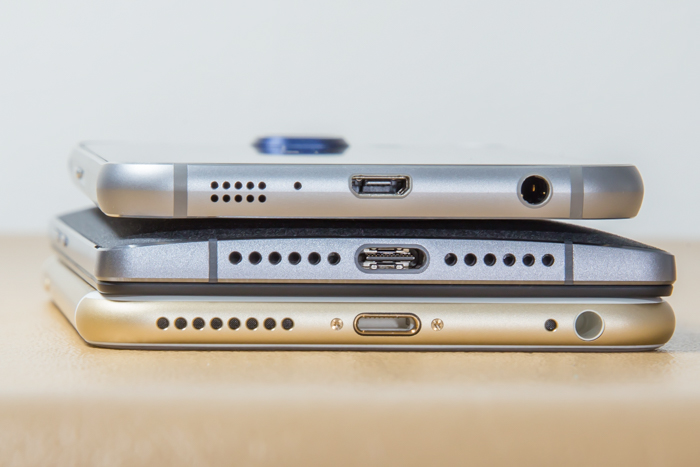
Image credit: ArsTechnica – Micro-USB (top), USB-C (center), Apple Lightning (bottom)
The other concern is industry-wide adoption. Currently, there is a rather partisan split between Apple and Google (all Android-enabled devices) on mobile industry standards and connection peripherals. In 2012, Apple made a practical yet shameless move of launching its own Lightning standard as an alternative to USB, knowing full well that the market would quickly splinter rather than unify around a single data and charging protocol going forward over the next decade. Three years later, USB-C was announced, albeit three years too late to recover from the observable standards fracture that Apple had willingly placed on the mobile industry.
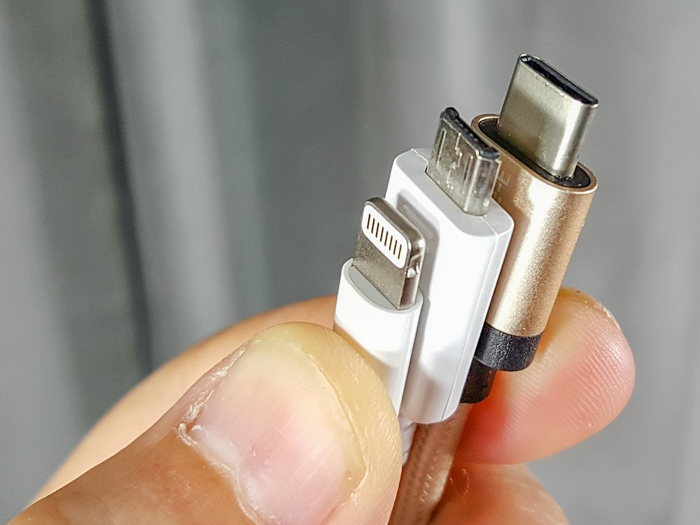
Image credit: PocketNow – Apple Lightning (left), Micro-USB (center), USB-C (right)
If Apple and Android smartphone manufacturers choose to replace the 3.5mm headphone jack with a USB-C solution, then they would be obligated to include USB-C to 3.5mm adapters with every new device in order to avoid backlash from users with traditional audio equipment.
It is unlikely that Apple will do this, as the company is known for charging every last penny on adapters that should often be included with new device purchases – $29 for its Thunderbolt to Gigabit Ethernet adapter, $19 for its USB-C to USB adapter and $25 for its USB-C to Lightning Cable. If Apple continues to market Lightning headphones as a viable alternative to USB-C, there is guaranteed to be another format war and one in which Apple's prospects are considerably outnumbered by Android users.
On the other hand, if Android manufacturers completely remove 3.5mm headphone jacks, replace them with USB-C only solutions and do not provide adapters, then this would only incite users of traditional audio equipment to become angry at purchasers of newer USB-C audio solutions. Traditional 3.5mm users would then be required to purchase adapters at the expense of users purchasing newer USB-C equipment.
The solution, of course, is to gradually phase out the existence of 3.5mm audio jacks rather than immediately replacing them or requiring millions of users to purchase adapters. Intel, AMD, Samsung, Dell, Lenovo and others announced plans to phase out VGA and LVDS connectors as early as Q4 2010, and they eventually were removed from the most device manufacturing processes between 2013 and 2015, respectively.
The only issue with an industry-wide adoption proposal is that Apple would need to plan an exit strategy for its Lightning connector and embrace USB-C in its next-generation mobile products due in a year and a half from now. Whether not the company wants to accept humility for its actions with Lightning in 2012 is a concern that will be left to company executives and investors, among all other private circles involved in the matter.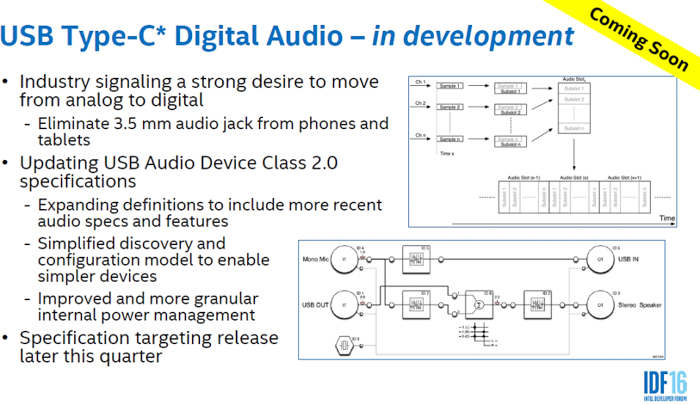
Intel’s new mobile USB-C digital audio standard is due to be finalized before the end of June and is ultimately designed to support more recent audio formats and features, improve internal power management, and add new discovery and configuration models to enable “simpler” devices. New devices adopting the standard are expected to gain additional features including a thermal sensor for earpieces. This may prove useful for measuring temperature during workouts and providing some in-ear biometric data back to a connected mobile device.

